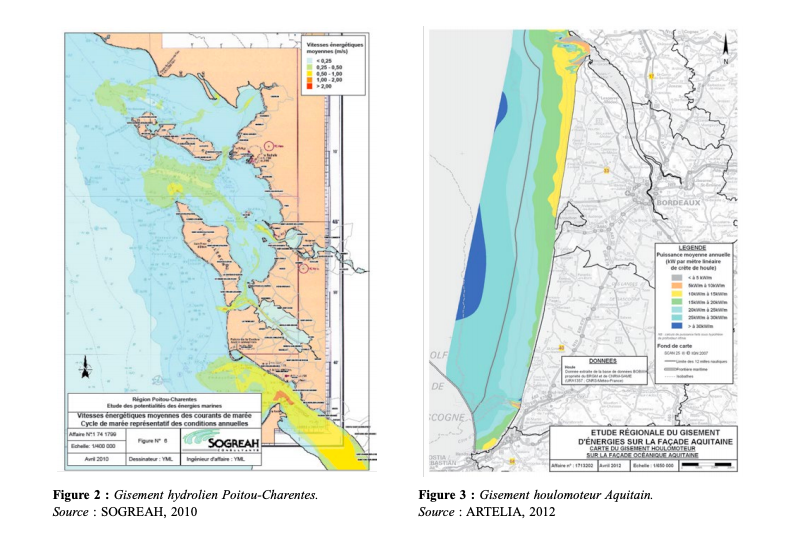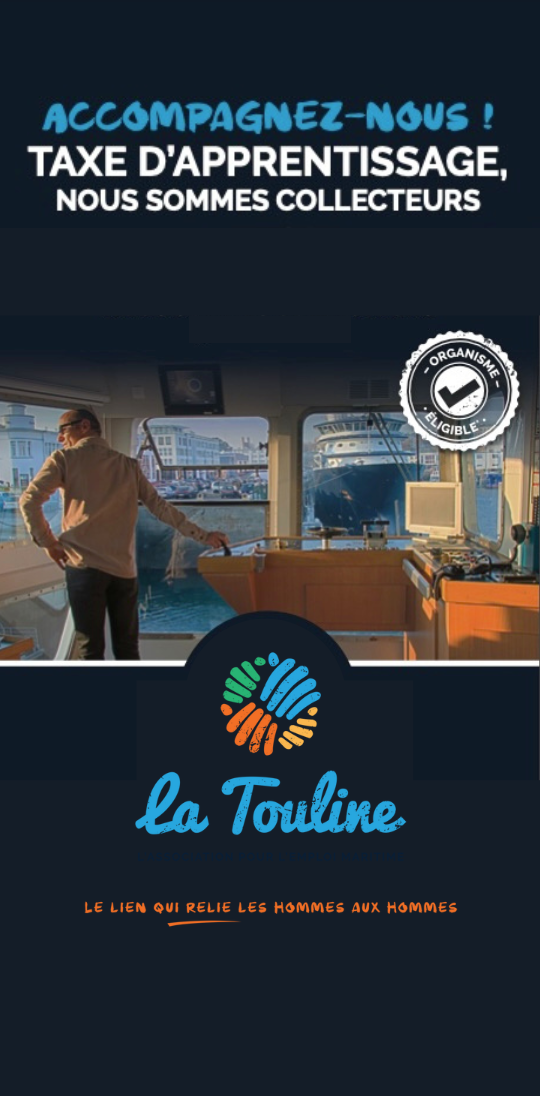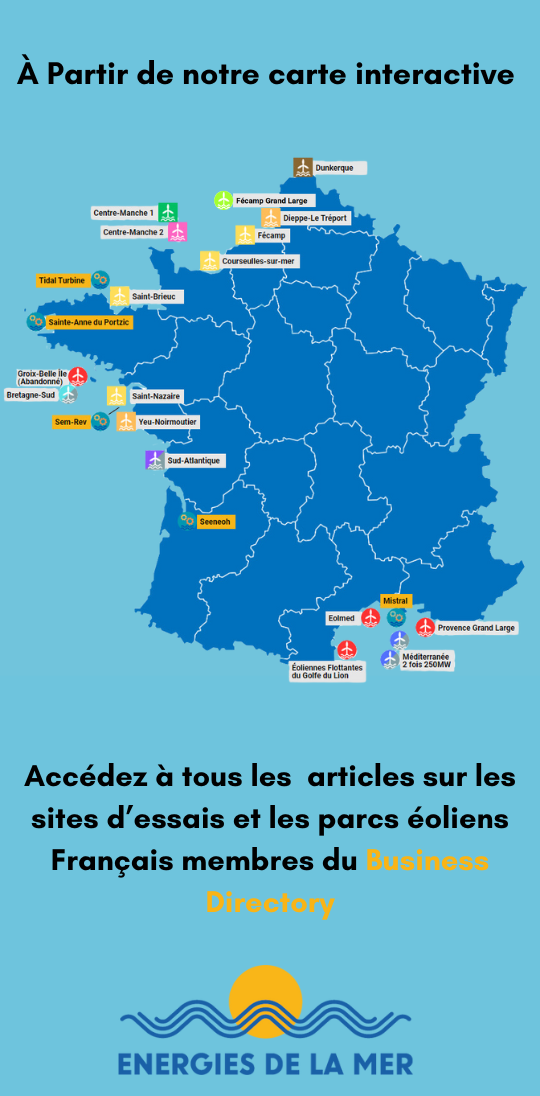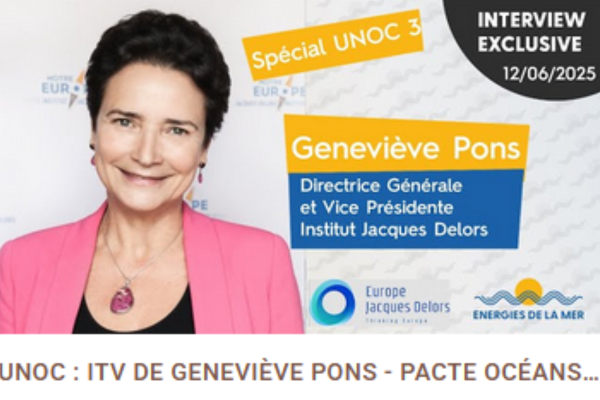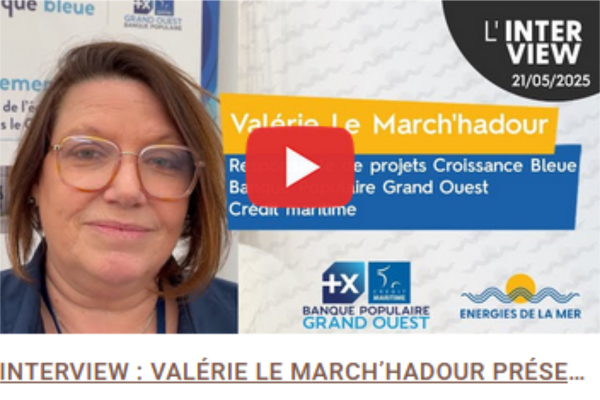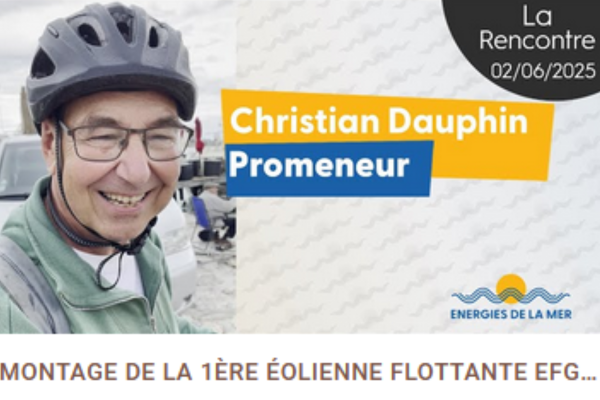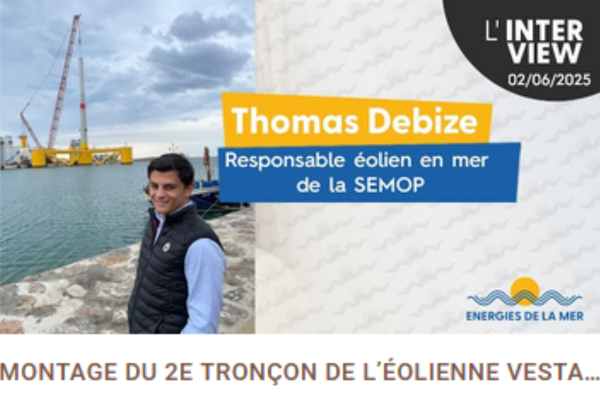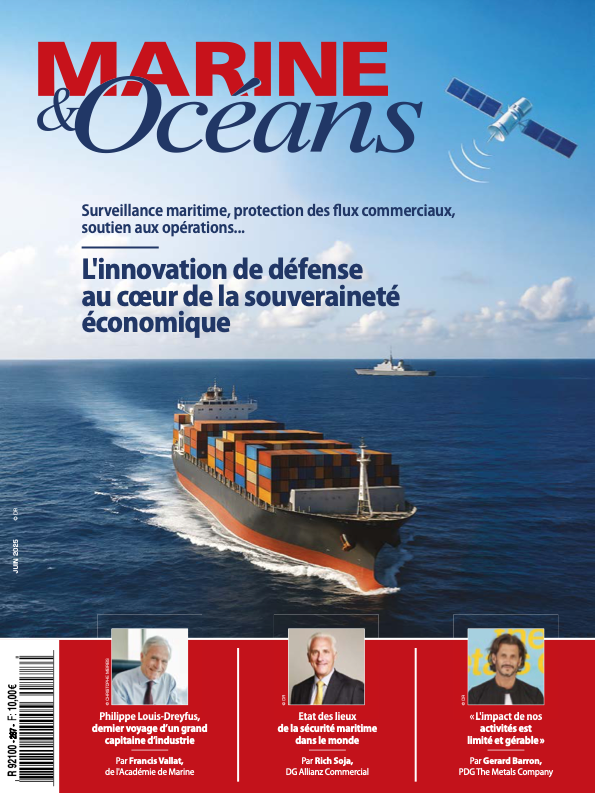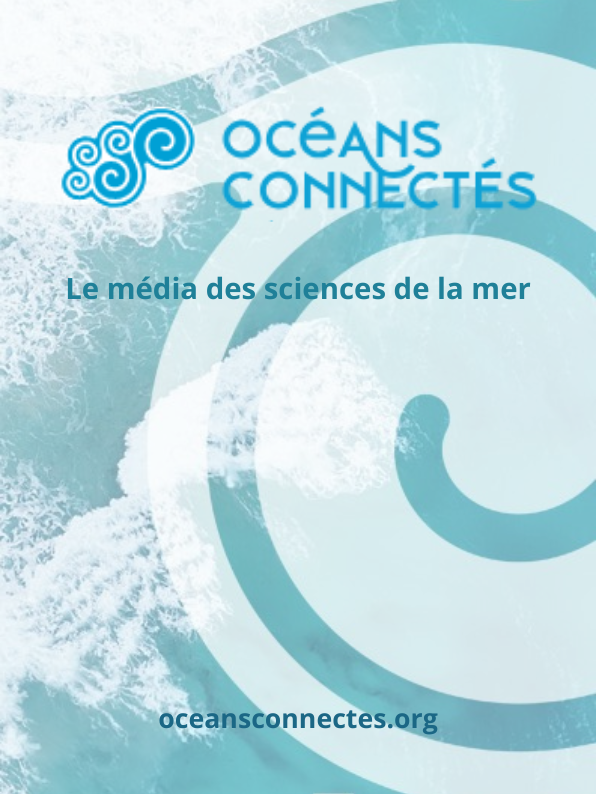Nantes – France (U.E) – 30/07/2015 – energiesdelamer.eu – Energies renouvelables de la mer – Des méthodes : Qui cherche trouve ! Méthodes de calculs des potentiels et productibles associés aux énergies marines : études de cas en Manche-Atlantique.
La Houille Blanche, n°3, 2015, p. 18-25
Méthodes de calculs des potentiels et productibles associés aux énergies marines : études de cas en Manche-Atlantique
Methods for calculations of potential and producible associated with marine energies: case studies in the Channel – Atlantic
1 ARTELIA Eau & Environnement
e-mail: sebastien.ledoux@arteliagroup.com ;
2 INNOSEA,
e-mail : hakim.mouslim@innosea.fr
Face au développement des EMR (Energies Marines Renouvelables) ces dernières années et à la demande de collectivités publiques territoriales d’évaluer le potentiel énergétique de leur domaine côtier, il était nécessaire de se doter d’un outil intégré permettant de déterminer à l’échelle d’un site puis d’un territoire d’abord la ressource brute par type d’énergie, puis successivement le potentiel technique et technico-économique.
Cela a conduit les équipes d’ARTELIA à mobiliser leurs spécialistes en hydraulique maritime et fluviale et les énergéticiens pour développer un outil dédié au calcul des productibles EMR.
Dans cet objectif opérationnel, ARTELIA a mis en œuvre des actions R&D afin de disposer de l’état de l’art des méthodes de calculs en vigueur et des outils existants et mis en œuvre dans les autres pays européens pionniers du domaine et en particulier au Royaume-Uni (Atlas of UK Marine Renewables Energy Ressources, ABP Mer,) et aux Etats- Unis (travaux de l’EPRI -Electric Power Research Institute- notamment).
L’outil a ensuite été développé et mis en œuvre successivement dans le cadre du calcul du potentiel EMR du domaine côtier de la Région Poitou-Charentes (Maître d’Ouvrage : Région Poitou-Charentes), puis à travers les missions d’études réalisées sur le potentiel hydrolien de Basse-Normandie (Maître d’Ouvrage : DREAL Basse-Normandie) et sur le potentiel EMR du littoral Aquitaine (Maître d’Ouvrage : Région Aquitaine – GIP Littoral Aquitain). L’outil permet successivement d’évaluer les gisements, potentiels techniques et technico-économiques des ressources EMR. Il a été appliqué à des études en lien avec des projets de fermes d’hydroliennes (offshore, en estuaires et rivières), houlomotrices (offshore, en zones littorale et côtière) et champs d’éoliennes offshore.
Abstract
Faced with the development of Marine Renewable Energy (MRE) in recent years and demand from regional public authorities to evaluate the energy potential of their coastal domains, it was necessary to design an integrated tool for determining, at the scale of a site and then a region, first the gross resource per energy type and then its technical potential followed by its technico-economic potential.
In response to this need, Artelia mobilised its experts in maritime and river hydraulics and in energy with the aim of developing a tool dedicated to calculating MRE production capacities.
With this operational objective in mind, ARTELIA undertook R&D actions in order to determine the state of the art in calculation methods and in tools already developed and in use in other European countries spearheading this activity, especially the United Kingdom (Atlas of UK Marine Renewable Energy Resources, ABPmer,) and the United States (in particular the work of the EPRI (Electric Power Research Institute)).
The tool was then developed and applied successively in the framework of calculating the MRE potential of the coastal domain of the Poitou-Charentes region (client: Poitou-Charentes regional council), then through study assessments performed on the marine current power potential of Lower Normandy (client: DREAL Basse-Normandie) and on the MRE potential of the Aquitaine coast (client: Aquitaine regional council – GIP Littoral Aquitain). The tool allows for the assessment of the resources, technical and techno-economic potentials It has been applied to the following topics: marine current power (offshore and in estuaries and rivers), wave power (offshore, nearshore and coastal) and wind power (offshore and floating turbines).
This article provides a brief summary of the various aspects of the tool implemented, illustrated through a few examples drawn from the studies referred to above.
Mots clés : énergies marines renouvelables / potentiel énergétique / productible énergétique
Key words: marine renewable energy / potential / producible power
© Société Hydrotechnique de France, 2015
Publicités Google :

